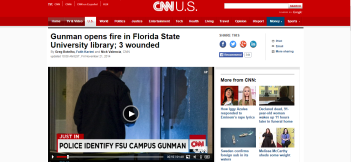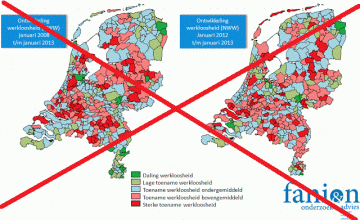
Source
The internet has brought us closer together. Stories can now reach much more people than let’s say 30 years ago and that’s a good thing. Much more people can have access to the stories you wrote and you can get in direct contact with your readers. But there is also a downside to this closing gap. Not only true stories are spread but also fake ones or at least not completely true ones. That is why fact-checking has become a bigger responsibility and a greater challenge. Still the amount of fact-checkers that are employed in a news organization is decreasing. It seem that the old saying ‘Get your facts straight’ isn’t as important anymore. But can you really make a good, trustworthy story without getting all the right facts?

Source
According to this famous quote by Bernard Baruch, every man has a right to be wrong in his opinions, but no man has a right to be wrong in his facts. So it is your duty to get all the right facts. Still as journalist Federico Guerrini mentioned in his article for the Oxford magazine a more popular belief among politicians, and some journalists, is why should you spoil a good story with the truth.

Source
So which one is it? Who has the right idea about facts? Well, it isn’t that black and white. The right direction, in my opinion, lies in the middle. It is important to check your facts since it is your duty as a journalist to write accurate stories, but in some cases you can bend the truth a little to create a more attractive or interesting story. Besides, as I will explain later, it is impossible to check every single fact.
Why should you check your facts?
Fact-checking is, as I mentioned earlier, still important since it is your job as a journalist to write accurate stories. One of the newspapers that still have a separate fact-checking department is the German newspaper Der Spiegel. Their motto is “to say what is”. It is important tothem “[…] to write and produce what is; to report, analyse and critique the world as it is, factually and faithfully, without fear, bias or influence”. According to the head of the fact-checking department, Dr. Eckart Teichert, Der Spiegel prints facts regardless of whether a friend or an enemy will be pleased and as a fact checker he also corrects the facts. And not only will fact-checking make your article more accurate, it will also make it more credible. Klaus Brinkbäumer, one of the three editors for Der Spiegel, calls fact-checking their selling point. He sees it as part of what makes the newspaper trusted.
Why is it important for journalists to check their facts?
Being a good fact checker basically means being a good reporter according to the former head of research Vanity Fair, as quoted in the book ‘The Fact Checker’s Bible: A Guide to Getting It Right’ by Sarah Harrison Smith in 2004. But why is that so? Bill Kovach and Tom Rosenstiel write in their book ‘The Elements of Journalism‘ that it is important for journalist to fact-check, because of the following five rules:
- Journalists first obligation is to the truth
- Journalists first loyalty is to the citizens
- The essence of journalism is a discipline of verification
- Journalists must maintain an independence from those they cover
- Journalists must keep the news comprehensive and proportional
Why is fact-checking important for the public?
You have read now why fact-checking is important for journalists, but why is it important for the public? According to the international principles of professional ethics in journalism, as issued by the Fourth Consultative Meeting of International and Regional Organizations of Journalists in Paris on 20 November 1983, people have the right to true information and it is the journalist’s task to serve that right. The public have a right to get the objective picture of the reality. The people have a right, according to these principles, to have access to accurate and comprehensive information. They also have the right to express themselves freely through various media platforms. Furthermore, it is the journalist’s task to serve those rights to true and authentic information. Facts need to be reported in their proper context and the journalist should provide information so that the public can form a clear, honest and object picture of the world.
Why you should not and cannot get every fact right
As I said earlier, it is important to check your facts and to get the right facts, but in some cases you can bend the truth a little to create a more attractive or interesting story. Let’s say, for example, you are writing an article about how the amount of people who commit suicide increases during the holidays in December. You talk about the numbers and how they relate to other months. To describe the situation you might also say something about that many people don’t have family members to visit anymore or the days that are darker and colder during that time. Now does everything you see need to be right? Does it matter that the numbers might be incorrect? Yes, that matters since an incorrect number could change the whole story. But does it matter that December is indeed the coldest month? No, it is not important for your story that November, for example, was colder that year of the past few years than December. So it is important to get your facts right when it could change your whole point of view. But it isn’t as important to get all the right facts if it wouldn’t change much about your main point.
Furthermore, it is also impossible to get every fact right. Facts aren’t always objective. They can be open to interpretation. Facts can also change over time. Something that was a true fact years ago, might not still be a true fact.
Conclusion
To summarize, getting your facts straight seems less important to some nowadays, but in my opinion it still is. It is important to make sure you have the right facts and that your facts are true. It creates a trustworthy article and also increases your credibility. However, you don’t have to get, and you cannot get, ALL the facts right. In some cases you can still have a good story without having all the facts. Besides, it is also impossible to get all the facts right.














